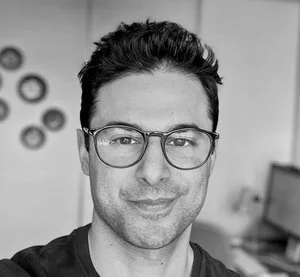The LMK Foundation supports innovative and cross-border scientific research in several areas. They primarily provide grants for research at Lund University and projects in science, medicine, the humanities, and theology. The founder of LMK, Mikael Karlsson, was a strong believer in the outcomes of interdisciplinary collaborations and exchanges. The motto for the foundation is to promote researchers who dare to think in new ways.
The molecular basis of transthyretin amyloidosis will now be the research topics for Daniel Sarabi. Amyloidosis is caused by a protein called transthyretin, where the protein changes its shape and forms into fibrous clumps. These aggregated misshaped proteins can be accumulated into various organs and peripheral nerves, which can cause them to function abnormally
“ The overall aim will be to gain substantial progress for an understanding of the molecular basis underlying TTR amyloidogenesis, along with major steps in the identification of ligands that effectively block the TTR molecule from disassembly”, explains Daniel Sarabi.
The postdoc position is in close collaboration with BMC, The Biomedical Centre at Lund University. Many of the methods used by biophysicists will be applied such as small angle neutron scattering, X-ray solution scattering as well as computer modelling to understand different aspects of the structure. Hopefully we will also be able to synthesize new drug targets.
Previously, Daniel Sarabi worked in the research group of Richard Neutze at the University of Gothenburg, focusing on protein structural dynamics of light activated integral membrane proteins, by utilizing time-resolved x-ray solution scattering in conjunction with serial crystallography and molecular dynamics simulations. The title of this doctoral thesis is “Structural dynamics of Rhodopsins using time-resolved X-ray solution scattering”. Time-resolved X-ray solution scattering (TR-XSS) is a sub-field of structural biology which can detect secondary structural changes in proteins as they evolve along their functional pathways in real time.
A well-deserved holiday with his family awaits and it will include several weddings in Iceland, the home country of his wife. Due to the pandemic many friends and relatives has postponed their festivities and so this summer will be even more joyous and celebrate that we now can meet in person again.
“ I am very excited to work with LINXS, as an institute that lies at the interface between MAXIV, ESS and academia and promotes science education together with domestic and international science collaborations. The project with Professor Trevor Forsyth will also include important biology to improve human health by utilizing numerous biophysical techniques in X-ray and neutron scattering, and is indeed a privilege to take part of”, says Daniel Sarabi.
Link to Daniel Sarabi doctoral thesis:
Structural Dynamics of Rhodopsins using Time-Resolved X-ray Solution Scattering (gu.se)
Link to LMK Foundation (in Swedish)





















